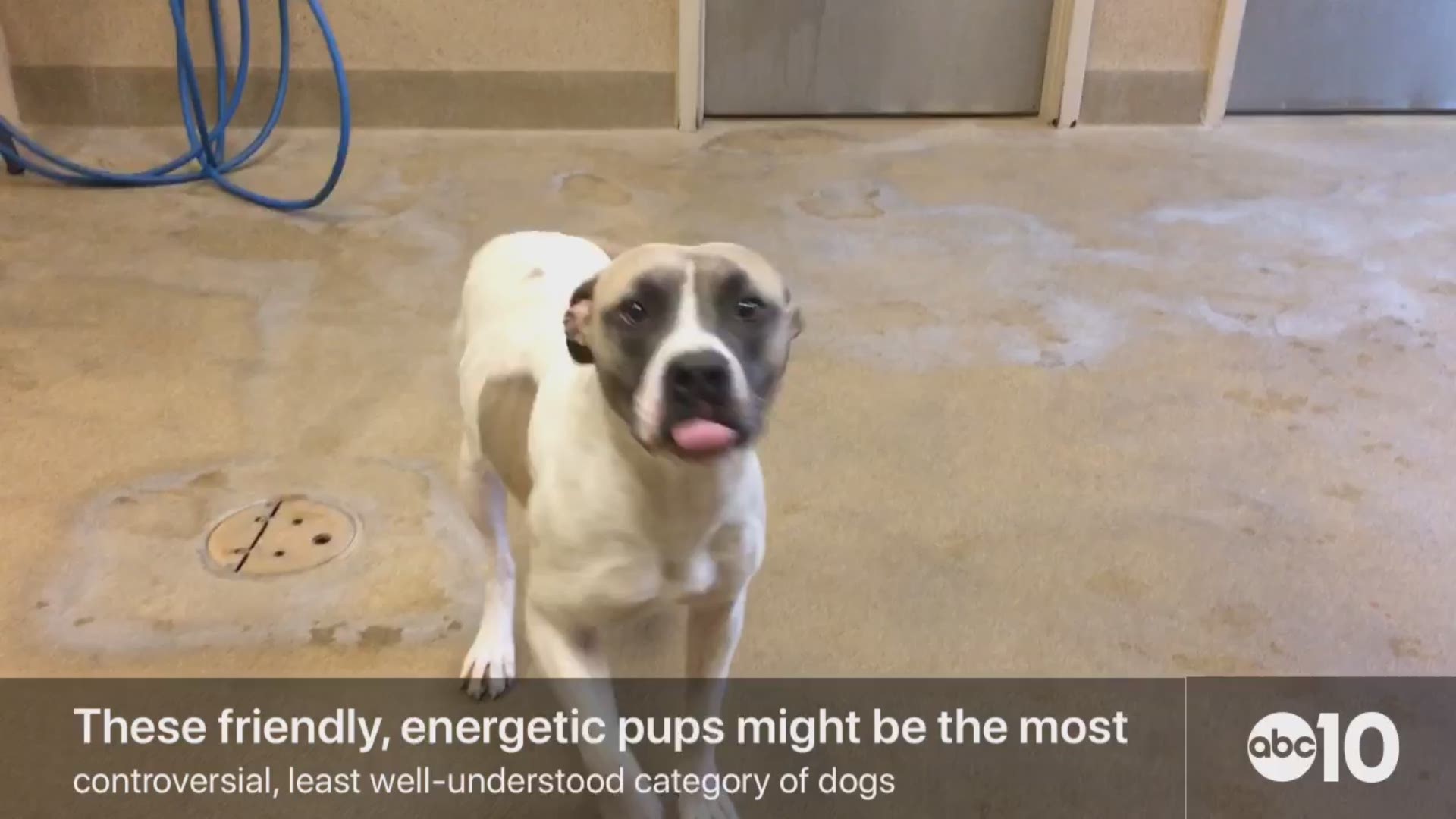Shelter dogs have a tough row to hoe.
But it’s even tougher for those dogs categorized as pit bulls.
In Sacramento, Stockton and other cities across the nation, shelters are packed with dogs classified as pit bulls.
While they have a popular reputation for being vicious, unpredictable dogs, those who work most closely with them – shelter workers – say it’s unfounded.
At the Sacramento County Bradshaw Animal Shelter last week, county spokesperson Janna Haynes brought out Cooper, a relaxed, medium-sized dog, describing him as a good example of an American Staffordshire terrier.
“This is what everyone thinks of when they think of a pit bull,” she said. “Short legs, big chest, big head.”
After ambling around the room on a sniffing expedition, Cooper, with a steely look that could freeze a burglar at forty paces, returned to Haynes to be petted and quickly flopped on the floor, rolling over to have his belly rubbed, grunting contentedly.
Haynes said the dogs get "a bad rap."
“We experience far fewer aggressive dogs than we do happy family dogs,” she said, adding that even dogs that come in initially – understandably -- fearful, quickly respond to the attention, consistent food and shelter, and love given to them by shelter workers.
Mike St. Pierre, adoptables advocate at the Stockton Animal Shelter, concurred.
“The dogs you see nowadays are Chinese knockoffs of the ‘tough dogs’ (of past years),” St. Pierre said. “They look tough, but are more likely to curl up on your lap!”
St. Pierre, a passionate advocate for the dogs, said dogs classified as pit bulls make up about half of the large dog population at the Stockton Shelter. Through adoption events and offering free adoption of pit bulls, the shelter hopes to save the lives of as many dogs as possible.
“Our goal isn’t to make everyone an owner of a pit bull,” St. Pierre said. “It’s to make people see they are not the vicious dogs the media portrays.”
Shelter workers give various reasons for the large numbers of pit bulls, more a category than a breed of dog, in shelters:
The breeds categorized as pit bulls (American Staffordshire terrier, American pit bull terrier, American bully and Staffordshire bull terrier) tend to have large litters.
Some say the demographic most attracted to the breed, lower income young men, is also least likely to spay and neuter their animals (others disagree).
Others acknowledge the stigma attached to pit bulls might discourage adoptions.
Difficulty finding housing that will accept the breed might lead some families to give up their dog.
Misidentification might also pad the statistics somewhat – shelters do their best to properly categorize the dogs that wind up in their care, but as they are frequently strays, it isn’t always possible.
Mixed breed dogs appearing to have pit bull somewhere in the mix might be misidentified out of an abundance of caution.
Boxers, bullmastiffs and several other breeds have characteristics similar to pit bulls, and when mixed with other breeds might produce puppies that look like pit bulls.
“Any blocky headed dog, or any mix of breeds that is between 35 and 100 pounds and upwards of 30 individual dog breeds may currently fall in this broad category through the use of visual breed identification,” said Steffen Baldwin, a Huffington Post blogger.
This is important, because statistics compiled regarding dog attacks and other issues often rely on visual identification.
Whatever the reason, there are simply more of the dogs than homes for them to go to. About 3.5 million of them are euthanized each year, according to the American Pit Bull Foundation.
Pit bulls have been around for centuries, but extensive media reports of maulings – sometimes fatal – only started in the 1980s. While the dogs’ detractors argue that they are responsible for an outsized percentage of dog attacks and fatalities, supporters point to the human element, blaming owners for mishandling or mistreating the dogs.
According to the American Temperament Test Society, pit bull terriers ranked as the second ‘most tolerant’ dogs, rated for low aggression, panic and avoidance. Statistics compiled by the ASPCA and the Humane Society indicate that 84 percent of dogs involved in fatal attacks were neglected or abused and 86 percent involved un-neutered male dogs
The American Society for Prevention of Cruelty to Animals position on the dog is that they should be treated as individuals and not banned.
PETA supports breed-specific sterilization as a way of reducing the population and for public safety, according to a Time magazine article.
“These dogs were bred to… fight each other to the death,” Daphna Nachminovitch, PETA’s senior vice president of cruelty investigations. “Just because we’re an animal-rights organization doesn’t mean we’re not concerned about public policy.”
However, the Centers for Disease Control and Prevention advocates education of children on dog bite prevention, breed-neutral dangerous dog ordinances that help animal control officers do their jobs and keep people safe and spay/neuter education and assistance to reduce dog bits and create safer communities.

